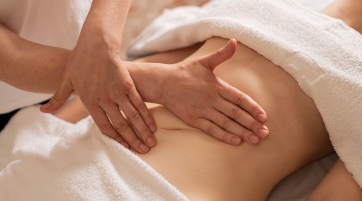

Cupping therapy is one of the most intriguing alternative health practices in a world where these practices are becoming more and more popular. But is it actually effective? This is a question that has puzzled skeptics as well as enthusiasts. Is cupping therapy a real therapeutic modality or just a fad? Continue reading to learn more about its advantages, drawbacks, and effectiveness.
What is Cupping Treatment?
Known by many names as cupping massage or cupping therapy, this age-old therapeutic method has been utilized for centuries in many different cultures. To draw the skin and underlying tissues into the cups, cups are placed on the skin and a vacuum is created. Glass, silicone, or bamboo are just a few of the materials that can be used to make the cups. Enhancing circulation, reducing pain, and encouraging relaxation are the objectives of cupping therapy.
Why is Cupping Massage Needed?
Let’s understand the underlying reasons that drive individuals to seek this unique therapeutic practice.
- Addressing Chronic Pain and Discomfort
People with chronic musculoskeletal pain, such as tension in their muscles, neck pain, and back pain, frequently seek out cupping therapy. The treatment presents a viable all-natural approach to treating these problems because of its capacity to increase blood flow and reduce muscle knots. Aiding in Recovery and Performance Enhancement Cupping therapy is a part of routines for athletes to help their muscles recover from hard training sessions. Accelerated recovery may be possible due to the therapy’s ability to improve blood circulation and lessen muscle soreness. Some athletes think that cupping therapy can help them perform better because it can reduce muscle tightness, which increases range of motion and flexibility.
- Providing Stress Relief and Relaxation
The ability of cupping therapy to promote relaxation makes it attractive to people who are trying to reduce their stress. Calm may be encouraged by the parasympathetic nervous system, which may be triggered by the cups’ mild suction and warmth.
- Promoting Blood and Lymphatic Circulation
It is thought that cupping treatment improves circulation, which supports the body’s natural detoxification process. Through improved lymphatic and blood flow, the therapy may aid in the more efficient removal of waste products.
Cupping Therapy Benefits
Advocates of cupping therapy point to several potential benefits that this practice may offer:
- Pain Relief
Pain relief is one of the main reasons people seek out cupping therapy. It is thought that the suction the cups create will improve blood flow to the area, thereby easing muscle tension and accelerating healing. For this reason, cupping massage is a well-liked option for people with ailments like headaches, neck pain, and back pain.
- Improved Circulation
Cupping therapy is thought to enhance blood and lymphatic circulation. By drawing stagnant blood to the surface and stimulating the flow of fresh blood, it may aid in detoxification and tissue repair.
- Muscle Relaxation
Through encouraging the release of tension and knots, the suction of cupping can result in muscle relaxation. Cupping therapy is a common tool used by athletes to aid in muscle recovery and improve performance.
- Reduced Inflammation
Many different health problems are frequently exacerbated by inflammation. Some have begun investigating cupping therapy’s potential benefits for conditions like fibromyalgia and arthritis due to its capacity to reduce inflammation.
Cupping Therapy Side Effects
While cupping therapy has gained popularity, it’s essential to acknowledge potential side effects and considerations:
- Skin Discolouration: Cupping often leaves circular marks or bruises due to blood vessels bursting. These marks fade in a few days to a week.
- Skin Sensitivity: Strong suction can cause skin irritation, leading to itching or blisters in severe cases.
- Risk of Infection: Improper hygiene and equipment in cupping can result in infection risk.
- Burns and Discomfort: Fire cupping’s heating process where air inside the cup is heated with flame, poses burn risks. Strong suction may cause discomfort or pain for some individuals.
Conclusion
If cupping therapy is on cards for you, make sure to consult a qualified practitioner. Make sure you discuss each and every detail, be it risks or benefits. There is no doubt about the fact that effects of the cupping treatment will vary from person to person, but, its effectiveness as an alternative medicine will continue to be a subject of constant debate.




